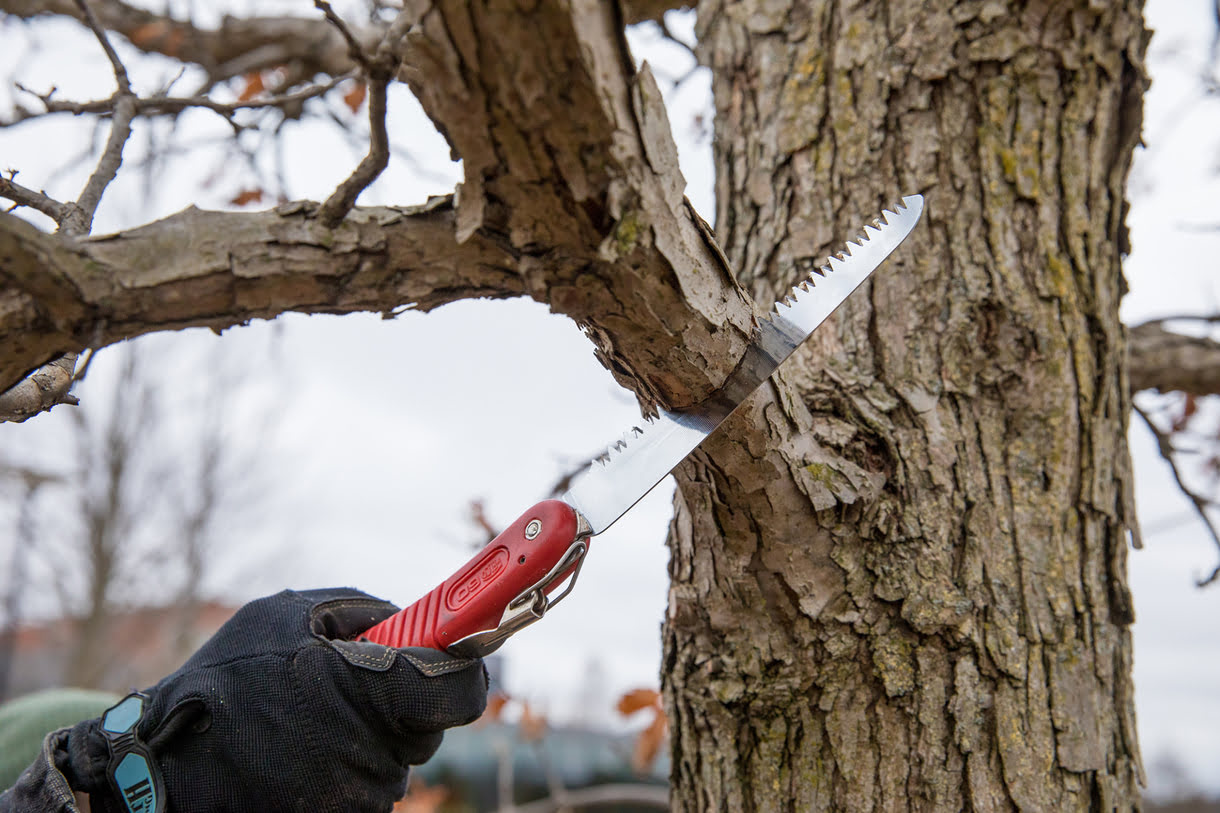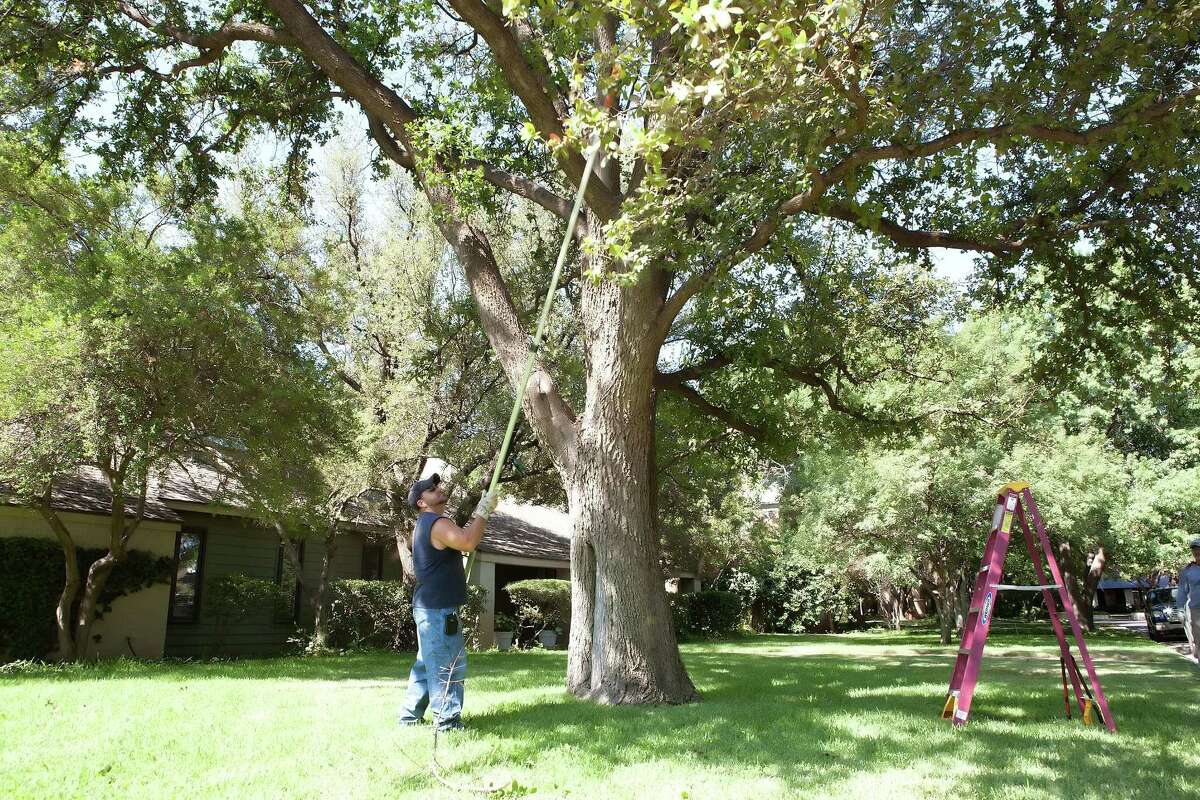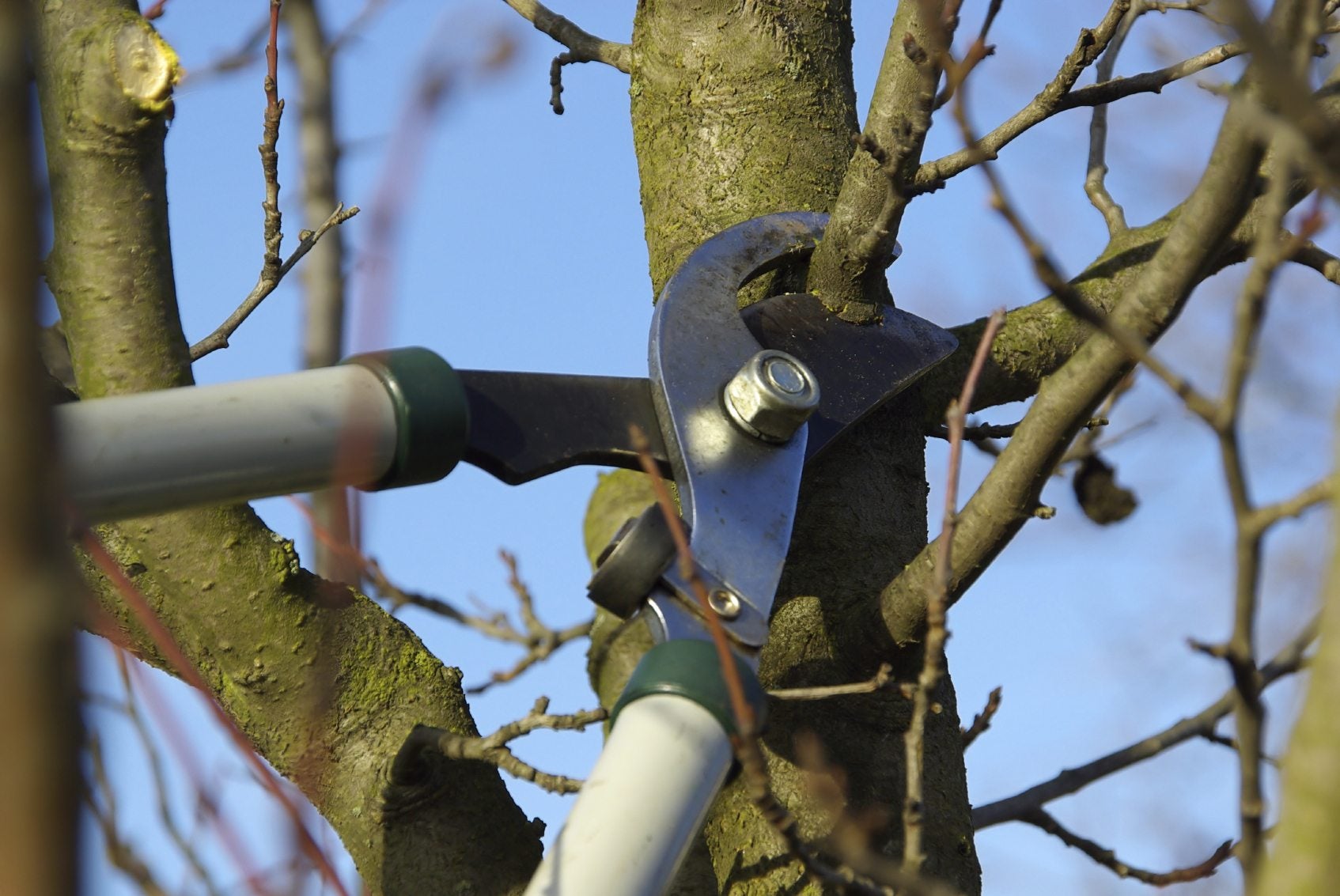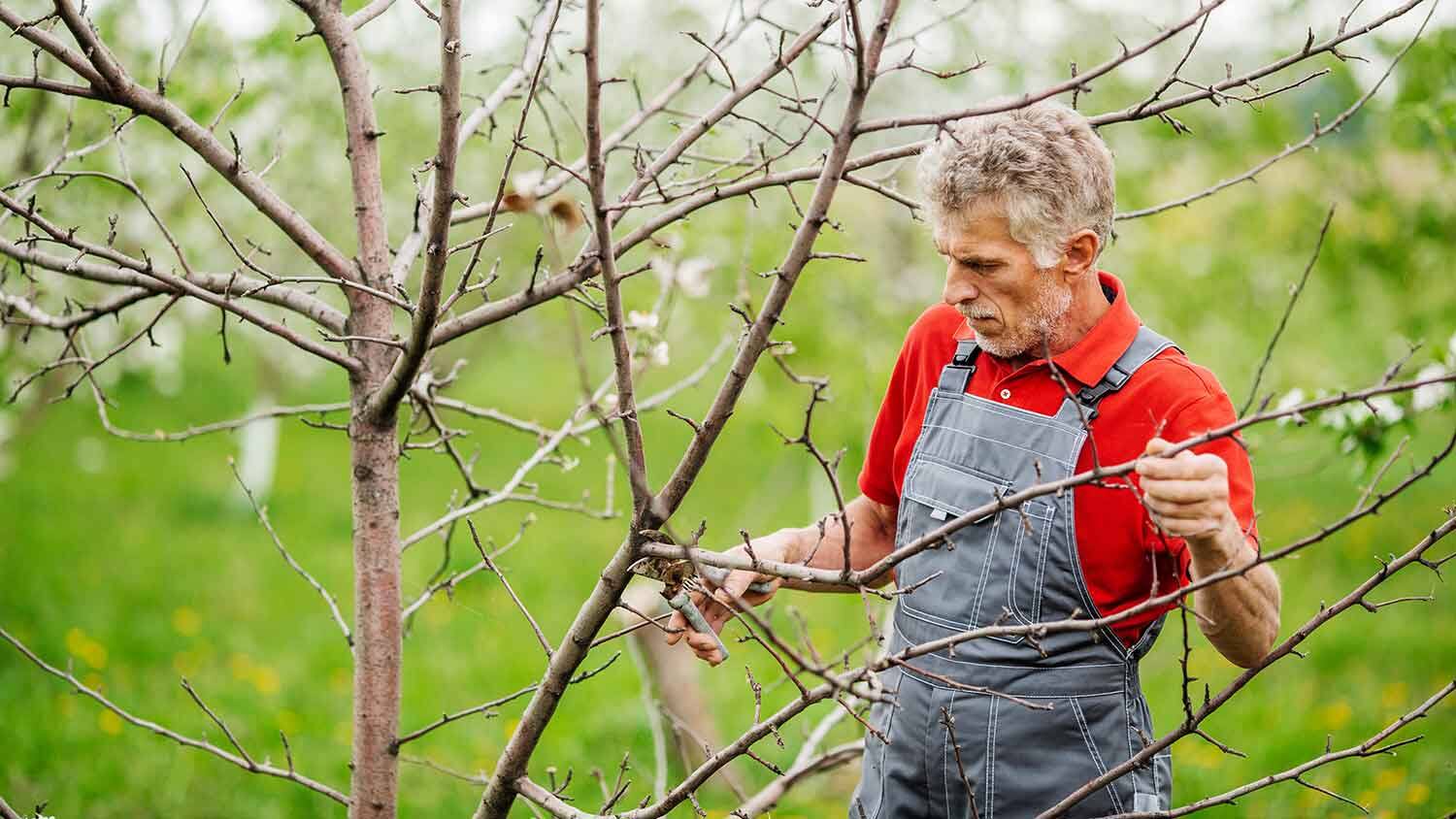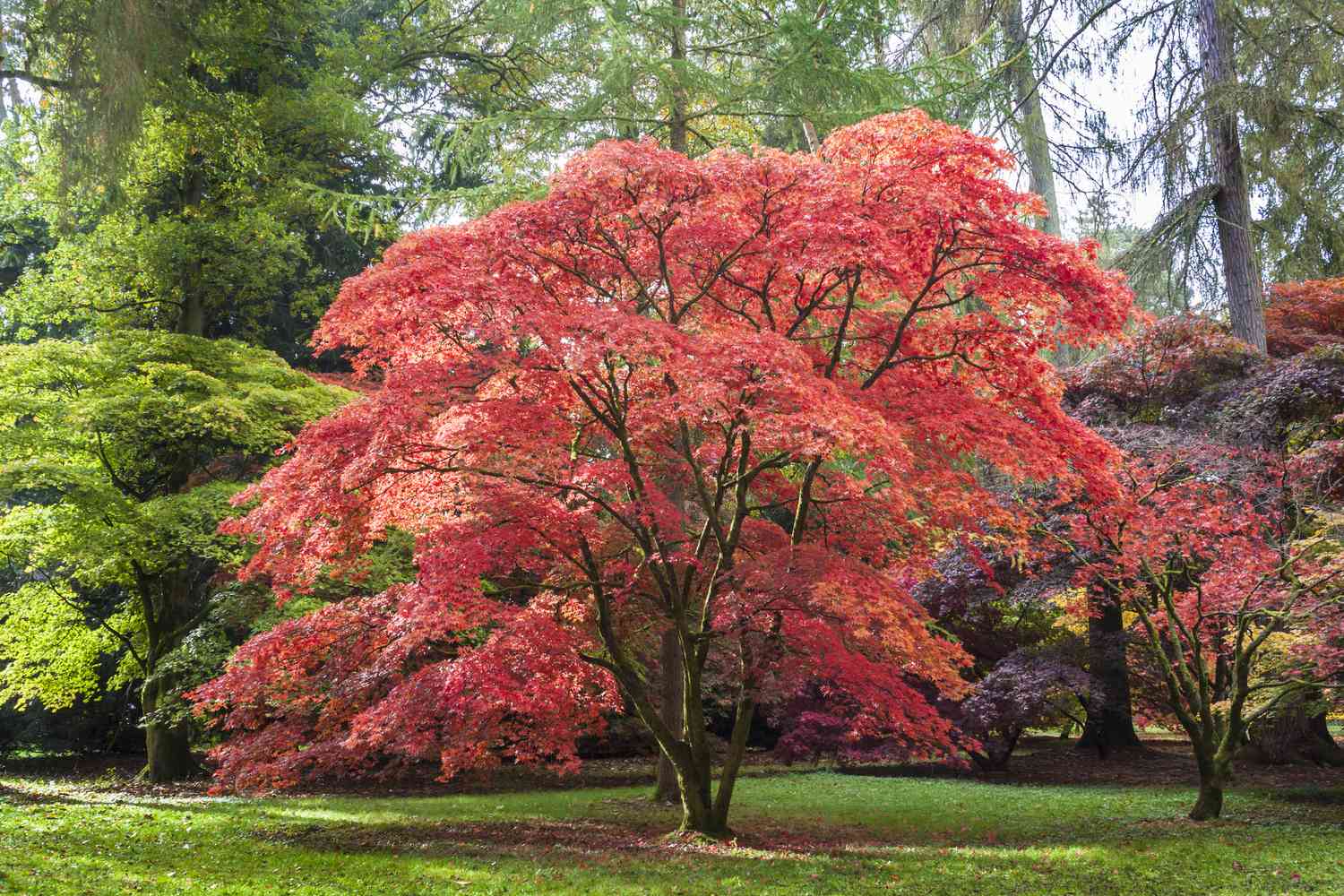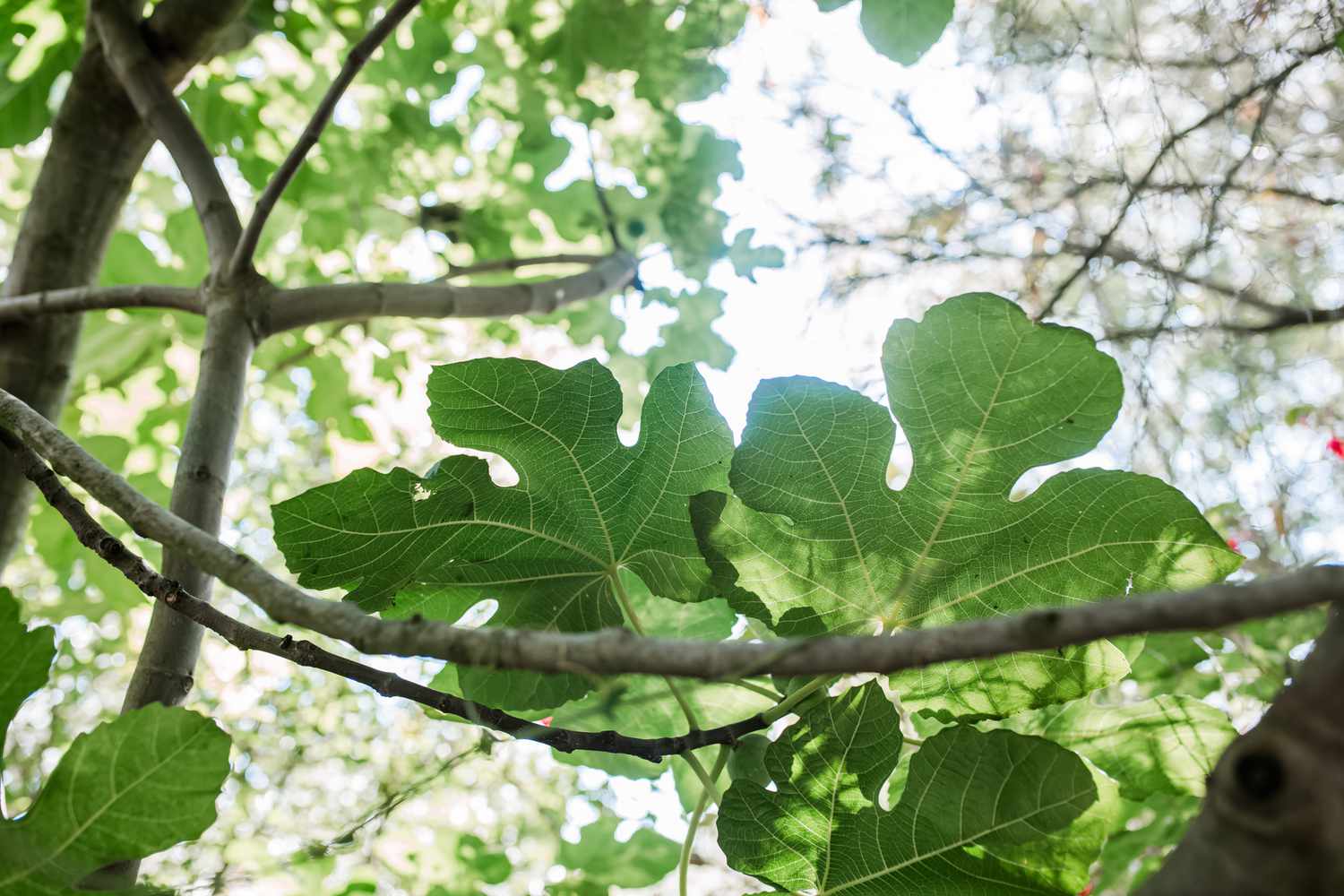Home>Gardening Techniques>Plant Care>When To Prune Apple Trees


Plant Care
When To Prune Apple Trees
Modified: January 22, 2024
Learn the best time for pruning apple trees and discover essential plant care tips to ensure healthy growth and bountiful harvests.
(Many of the links in this article redirect to a specific reviewed product. Your purchase of these products through affiliate links helps to generate commission for Chicagolandgardening.com, at no extra cost. Learn more)
Table of Contents
- Introduction
- Importance of Pruning Apple Trees
- Timing for Pruning Apple Trees
- Signs that Indicate Pruning is Needed
- Tools and Equipment Required for Pruning
- Steps to Properly Prune Apple Trees
- Pruning Techniques for Different Types of Apple Trees
- Common Mistakes to Avoid when Pruning Apple Trees
- Tips for Pruning Apple Trees in Different Weather Conditions
- Conclusion
Introduction
Welcome to the world of plant care, where we delve into the art and science of nurturing beautiful and healthy plants. One plant that stands out for its iconic beauty and bountiful harvest is the apple tree. Prized for its delicious fruit and picturesque appearance, apple trees require dedicated care and attention to thrive.
One critical aspect of apple tree care is pruning. Pruning apple trees is a necessary practice to promote their overall health, encourage proper growth and shape, and maximize their fruit production. However, knowing when and how to prune can be challenging, especially for new gardeners.
In this comprehensive guide, we will explore the importance of pruning apple trees, the ideal timing for pruning, the signs that indicate pruning is needed, the tools and equipment required, and the step-by-step process to properly prune apple trees. We will also discuss specific pruning techniques for different types of apple trees and highlight common mistakes to avoid. Lastly, we will provide essential tips for pruning apple trees in different weather conditions.
Whether you’re a seasoned gardener or just starting on your plant care journey, this article aims to equip you with the knowledge and skills to confidently prune your apple trees.
Importance of Pruning Apple Trees
Pruning is a vital practice in caring for apple trees. It serves several important purposes that contribute to their overall health and productivity. Let’s explore the key reasons why pruning apple trees is crucial:
- Enhances Air Circulation: Pruning helps improve air circulation within the canopy of the apple tree. By removing excess branches and foliage, airflow is increased, reducing the likelihood of diseases and pests taking hold. Proper air circulation also helps in the development of healthy fruit.
- Promotes Sunlight Exposure: Pruning aids in exposing the fruit-bearing branches to ample sunlight. Sunlight is essential for photosynthesis, the process by which plants convert sunlight into energy. Adequate sunlight exposure leads to better fruit quality, color, and ripening.
- Shapes the Tree: Pruning allows you to shape the apple tree according to your desired form. By selectively removing branches, you can create an open and balanced structure, preventing overcrowding and reducing the risk of branch breakage under the weight of fruit.
- Stimulates Fruit Production: Pruning encourages apple trees to focus their energy on producing high-quality fruit. By removing excess branches, the tree can allocate its resources more effectively, resulting in larger and tastier apples. Pruning also helps in thinning out the branches, allowing for better air and light penetration, which in turn increases the chances of flower bud development and fruitful harvests.
- Controls Disease and Pest Infestation: Pruning helps manage and prevent diseases and pest infestations. By removing diseased or damaged branches, you minimize the risk of spreading pathogens and provide a healthier environment for the tree to grow. Additionally, pruning can help with pest control by removing hiding spots and reducing pest populations.
These are just a few of the benefits of pruning apple trees. By understanding the importance of this practice, you can ensure the longevity and vitality of your apple tree, while enjoying a bountiful harvest year after year.
Timing for Pruning Apple Trees
The timing of pruning plays a crucial role in the overall health and productivity of apple trees. Pruning at the right time allows the tree to heal effectively and promotes proper growth and development. Here are the key considerations for timing your pruning:
1. Winter Pruning: Winter is the ideal time to prune apple trees. Pruning during the dormant season, typically between late winter and early spring before bud break, offers several advantages. With the tree’s energy focused on root development, pruning during this time promotes new growth and allows for better wound healing. It also helps to shape the tree’s structure before the growing season.
2. Avoid Pruning During Freezing Temperatures: While winter is the recommended time for pruning, it is essential to avoid pruning during freezing temperatures. Extremely cold temperatures can damage exposed tissues and inhibit proper healing. Wait for a stretch of milder weather to ensure the success of your pruning efforts.
3. Summer Pruning: While minimal pruning is recommended during summer, it may be necessary for specific purposes. Summer pruning focuses on correcting or removing any issues that arise during the growing season, such as damaged or diseased branches. It is best to avoid extensive pruning during this time, as it can stimulate excessive regrowth and compromise the tree’s energy reserves.
4. Pruning Young Apple Trees: Young apple trees require special attention when it comes to pruning. It is crucial to start shaping and training the tree during its early years. Pruning should begin in the first dormant season after planting, focusing on establishing a strong central leader and well-spaced scaffold branches. Regular pruning during the first few years helps shape the tree’s structure and encourages proper growth.
5. Maintenance Pruning: Once the apple tree has established its desired shape and structure, regular maintenance pruning is necessary. This involves removing dead, damaged, or diseased branches, as well as any suckers or water sprouts that may appear. Maintenance pruning can be done during the dormant season or as needed throughout the year.
By understanding the appropriate timing for pruning apple trees, you can ensure optimal results and promote the overall health and productivity of your tree.
Signs that Indicate Pruning is Needed
Regular pruning is essential for the health and vitality of apple trees. However, it can sometimes be challenging to determine when pruning is necessary. Here are some signs that indicate your apple tree may require pruning:
- Dead or Diseased Branches: Dead or diseased branches are a clear indication that pruning is needed. Remove any branches that show no signs of life, such as brittle wood, lack of buds or leaves, or signs of decay. Pruning these branches will prevent the spread of disease and encourage new growth.
- Crossing or Rubbing Branches: Look for branches that are crossing or rubbing against each other. The constant friction between branches can cause damage and open entry points for pests and diseases. Prune any crossing branches to maintain a healthy and well-spaced structure.
- Overcrowded Canopy: An overcrowded canopy can hinder air circulation and sunlight penetration, leading to disease and poor fruit production. If your apple tree’s canopy appears dense and overcrowded, selectively thin out branches to create an open and balanced structure.
- Water Sprouts and Suckers: Water sprouts are vigorous vertical shoots that grow from the trunk or main branches, while suckers grow from the root system. Both water sprouts and suckers can divert energy from the main branches and should be pruned to maintain the tree’s strength and form.
- Uneven Growth: If you notice uneven growth in your apple tree, with some branches growing vigorously while others are lagging behind, pruning can help balance the tree’s growth. Removing excessive growth and redirecting energy to weaker branches will encourage more even and productive growth.
These signs serve as indicators that your apple tree would benefit from pruning. Regularly inspecting and assessing your tree’s branches will help you identify the areas that require attention. Remember to always use sharp, clean pruning tools and follow proper pruning techniques to minimize damage and promote successful healing.
Tools and Equipment Required for Pruning
Pruning apple trees requires the use of specific tools and equipment to ensure efficient and precise cuts. Having the right tools can make the pruning process easier and help maintain the health and integrity of the tree. Here are the essential tools and equipment you will need:
- Pruning Shears: Pruning shears, also known as hand pruners or secateurs, are essential for making precise cuts on small to medium-sized branches. Invest in a high-quality pair of pruning shears with sharp blades for clean and effective cuts.
- Loppers: Loppers are designed to tackle thicker branches that pruning shears may struggle to cut through. They have long handles that provide leverage and extend your reach for pruning branches up to 1.5 inches in diameter.
- Pruning Saw: A pruning saw is necessary for removing larger branches or for making cuts in tight spaces. Choose a pruning saw with a curved blade, designed to cut on the pull stroke, allowing for more control and efficiency.
- Pole Pruner: A pole pruner is a long-handled tool with a pruning saw or lopper blade at the end. It is ideal for reaching high branches without the need for a ladder. Pole pruners come in various lengths and can help you safely and effectively prune taller apple trees.
- Gloves: Pruning can be rough on your hands, so wearing a pair of gloves is essential for protection. Choose gloves that provide both comfort and dexterity, allowing you to grip the tools firmly while reducing the risk of blisters or cuts.
- Ladder: Depending on the height of your apple tree, you may need a sturdy ladder to reach higher branches. Ensure the ladder is stable, and always follow safety precautions when working at heights.
- Disinfectant: To prevent the spread of diseases between cuts, it is crucial to have a disinfectant on hand. Use a household disinfectant or a solution of bleach and water to sterilize your pruning tools between cuts.
Investing in high-quality pruning tools and equipment will not only make your pruning tasks more efficient but also ensure the health and longevity of your apple tree. Remember to clean and maintain your tools regularly to keep them in excellent working condition.
Steps to Properly Prune Apple Trees
Properly pruning apple trees requires a systematic and thoughtful approach to ensure the best results. Follow these steps to effectively prune your apple tree:
- Assess the Tree: Start by carefully inspecting the apple tree and identifying the branches that need pruning. Look for dead, diseased, or damaged branches, as well as any crossing or rubbing branches.
- Begin with the 3 D’s: Start by removing the 3 D’s – dead, damaged, and diseased branches. Using clean and sharp pruning shears or saws, make clean cuts just outside the branch collar (the swollen area where the branch connects to the trunk or parent branch).
- Remove Water Sprouts and Suckers: Next, prune away any water sprouts (vertical shoots) and suckers (growth emerging from the base of the tree). These growths divert energy from the main branches and should be removed close to their origin point.
- Thin Out Excessive Growth: If the apple tree’s canopy is overcrowded, selectively thin out branches to allow for better air circulation and light penetration. Remove branches that are crossing or growing inward, focusing on maintaining an open and balanced structure.
- Aim for an Open Center: For certain apple tree varieties, such as those trained in the open center style, aim to create a vase-like shape with an open center. This promotes airflow and sunlight penetration. Select and retain scaffold branches that are wide-angled and well-spaced.
- Consider the Tree’s Age and Size: When pruning young apple trees, focus on establishing a strong central leader and scaffolds during the early years. As the tree matures, prune to maintain its shape and size, adapting the pruning techniques based on the tree’s age and growth habit.
- Step Back and Evaluate: After each pruning cut, step back and evaluate the tree’s overall shape and structure. This will help you ensure balance and symmetry as you work your way through the tree.
- Disinfect the Tools: Between cuts and when moving to different branches, sanitize your pruning tools with a disinfectant solution to prevent the spread of diseases.
- Take Your Time and Prune Carefully: Pruning is a delicate process, so take your time and make deliberate cuts. Avoid stripping branches or leaving stubs, as these can impede healing and invite disease.
- Finish with a Cleaning Cut: Once you have finished pruning, make a final cleaning cut by removing any small stubs or branches that may have been missed during the initial pruning.
Remember, pruning should be a gradual process done over several years rather than a drastic one-time event. Regularly monitor your apple tree’s growth and prune as needed to maintain its health, shape, and productivity.
Pruning Techniques for Different Types of Apple Trees
When it comes to pruning apple trees, different techniques can be applied depending on the specific type and growth habit of the tree. Here are some pruning techniques for different types of apple trees:
1. Central Leader Trees: Central leader trees have a single dominant, vertical leader branch that forms the main trunk. For these trees, the goal is to maintain a strong central leader and well-spaced lateral branches. Prune to remove any competing branches or watersprouts that may crowd the central leader. Also, thin out excessive lateral branches to maintain an open center and promote light penetration.
2. Open Center Trees: Open center trees have a vase-like shape, with multiple main branches emerging from the center. Start by selecting three to four main scaffold branches that radiate outwards and form the primary framework of the tree. Prune to create an open center, removing any inward-growing or crossing branches. The objective is to allow sunlight and air circulation throughout the center of the tree.
3. Espalier Trees: Espalier trees are trained to grow flat against a wall or support structure, forming a two-dimensional shape. Pruning is essential for shaping and maintaining the desired pattern. Regularly prune to encourage horizontal growth along the support structure, removing excessive vertical shoots and maintaining the form of the espalier pattern.
4. Dwarf or Semi-Dwarf Trees: Dwarf or semi-dwarf apple trees are smaller in size and have a more compact growth habit. Pruning these trees focuses on maintaining their size and shape, enhancing light penetration, and controlling growth. Regularly thin out branches to reduce crowding and remove any weak or crossing branches. Lightly prune the terminal buds to encourage bushier growth and a more compact form.
5. Columnar Trees: Columnar apple trees have a narrow, upright growth habit, resembling a column or pillar. Pruning these trees is relatively minimal due to their naturally compact form. Remove any crossing or crowding branches, and lightly thin out branches to maintain an open structure. Pruning columnar trees helps promote air circulation and prevent excessive congestion.
Before pruning any apple tree, it is essential to understand its specific growth habit and requirements. Consider researching the specific variety of apple tree you have or consult with a horticulturist for guidance on the best pruning techniques for your tree.
Common Mistakes to Avoid when Pruning Apple Trees
Pruning apple trees is a delicate process that requires careful attention to detail. While pruning can benefit the health and productivity of your trees, it’s essential to avoid common mistakes that can harm the tree or compromise its growth. Here are some mistakes to avoid when pruning apple trees:
1. Overpruning: One of the most common mistakes is overpruning. Removing too many branches can stress the tree and inhibit its growth. Avoid excessive pruning, especially in a single pruning session. Instead, opt for gradual pruning over a few years to maintain the tree’s health and structure.
2. Improper Timing: Pruning at the wrong time can impact the tree’s ability to heal and grow. Avoid pruning during freezing temperatures, as it can cause damage to the exposed tissues. Also, refrain from pruning during periods of active growth, as it can interrupt the tree’s natural processes and impact its productivity.
3. Incorrect Cuts: Making improper cuts can lead to damage, disease, and slow healing. Avoid making jagged or sloping cuts, as they can hinder proper healing. Instead, make clean cuts just outside the branch collar, where the branch meets the trunk or parent branch.
4. Stripping Branches: Stripping branches by removing too much foliage can rob the tree of its ability to photosynthesize and produce energy. Maintain a good balance when pruning, preserving enough foliage to support the tree’s growth and fruit production.
5. Neglecting Disinfection: Failing to disinfect your pruning tools between cuts can spread diseases from one branch to another. Take the time to sanitize your tools with a disinfectant solution or a mixture of bleach and water to reduce the risk of infection.
6. Ignoring Branch Collar: The branch collar is the swollen area where the branch connects to the trunk or parent branch. Avoid cutting into the branch collar, as it contains specialized cells that aid in the healing process. Make cuts just outside the branch collar to help the wound heal properly.
7. Overlooking Pruning Tools: Using dull or dirty tools can result in messy and damaging cuts. Keep your pruning tools sharp and clean to ensure clean and precise cuts. This promotes faster healing and reduces the risk of disease transmission.
By avoiding these common pruning mistakes, you can ensure the health and vitality of your apple trees, promoting their growth, productivity, and overall longevity.
Tips for Pruning Apple Trees in Different Weather Conditions
Pruning apple trees in different weather conditions requires some considerations to ensure the best outcomes for your trees. Whether you’re pruning in hot summers, chilly winters, or unpredictable weather, here are some essential tips to help you navigate the pruning process:
1. Pruning in Winter:
- Choose a dry and mild day to prune during the winter.
- Avoid pruning during freezing temperatures to prevent damage to the tree.
- Remove any snow or ice from the branches before pruning for better visibility and ease of access.
- Wear warm clothing and protective gear to stay comfortable and safe during the pruning process.
2. Pruning in Summer:
- Minimize pruning in the peak summer season as it can stimulate excessive regrowth and stress the tree.
- Focus on light pruning to remove any damaged or diseased branches, ensuring proper airflow and light penetration.
- Prune during the cooler parts of the day, such as early morning or late afternoon, to avoid heat stress on the tree.
- Hydrate the tree adequately before and after pruning to reduce stress and promote healing.
3. Pruning in Wet Conditions:
- Avoid pruning when the branches and foliage are wet to minimize the risk of disease transmission.
- Wait for a dry period to prune and ensure that the tree is not wet from rain or irrigation.
- Disinfect your pruning tools more frequently when pruning in wet conditions to prevent the spread of pathogens.
- Consider using a pruning sealant on larger cuts to protect against moisture entering the wound.
4. Pruning in Windy Conditions:
- Avoid pruning on very windy days, as it can make the process more challenging and increase the risk of accidents.
- If you must prune on a windy day, take extra precautions and ensure the stability of your ladder or any other equipment used.
- Make clean, quick cuts to minimize the time branches are exposed to strong winds.
- Consider securing branches to prevent damage or breakage during and after pruning.
Remember to always prioritize your safety while pruning and adapt your approach based on the weather conditions. By following these tips, you can successfully prune your apple trees and maintain their health and productivity in various weather scenarios.
Conclusion
Pruning apple trees is a valuable practice that promotes the health, shape, and productivity of these magnificent trees. By understanding the importance of pruning, the right timing, and the proper techniques, you can effectively care for your apple trees and enjoy bountiful harvests year after year.
Remember to assess your apple trees regularly and look for signs that indicate the need for pruning, such as dead branches, crossing limbs, or overcrowded canopies. Use the appropriate tools and equipment to make clean and precise cuts, taking care to disinfect your tools between cuts to prevent disease transmission.
Consider the specific growth habit of your apple trees when applying pruning techniques. Whether it’s shaping a central leader tree or maintaining an open center, tailoring your pruning approach to the tree’s type will ensure its healthy development.
Additionally, keep in mind the weather conditions when pruning. Prune during the dormant season in mild winter weather, avoid pruning in freezing temperatures, take precautions in hot summers, and be mindful of wet or windy conditions.
By avoiding common pruning mistakes and following these guidelines, you can nurture your apple trees to thrive and produce an abundance of delicious fruit season after season. Embrace the art and science of pruning, and watch your apple trees flourish with every careful cut.
